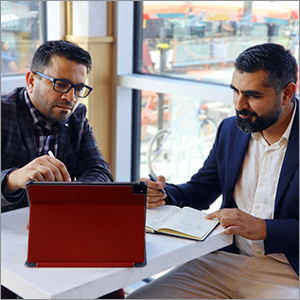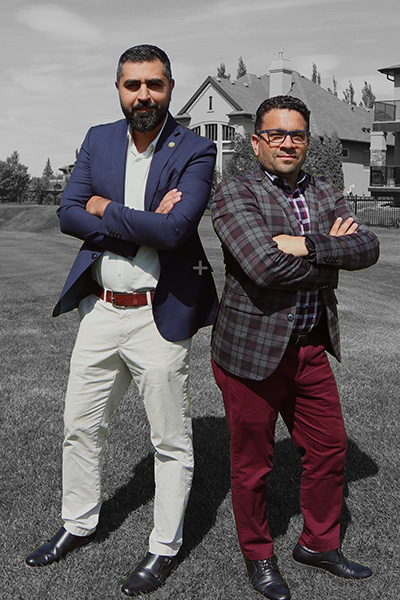Engineers Set a Moonshot Goal in Sustainability

 A recycling system designed by Edmonton-based professional engineers Dr. Rafiq Ahmad and Dr. Junaid OOsman Tahir was chosen as one of 17 global winning submissions in the first phase of NASA’s LunaRecycle Challenge. Their company Waste Parrot is the only Canadian organization to be selected from more than 1,200 teams across 86 countries.
A recycling system designed by Edmonton-based professional engineers Dr. Rafiq Ahmad and Dr. Junaid OOsman Tahir was chosen as one of 17 global winning submissions in the first phase of NASA’s LunaRecycle Challenge. Their company Waste Parrot is the only Canadian organization to be selected from more than 1,200 teams across 86 countries.
The ultimate goal of the competition is to reduce waste in space and limit what returns to Earth. Phase 1 invited teams to design advanced recycling solutions to tackle the waste generated during long-term lunar missions, and now the engineers are moving on to Phase 2, where they will create a working prototype of their system to present to NASA.
“As NASA is preparing for future human space missions, it is considering how waste streams can be minimized and how recyclables could be stored, processed, and repurposed in space,” explains Dr. Tahir. “The winners of this challenge definitely influence and inspire better approaches and outcomes of terrestrial recycling in general.”
Protecting the environment at home and afar

Both engineers have dedicated their careers to developing more effective reuse and recycling methods to improve and protect the global environment—Dr. Tahir’s experience is in artificial intelligence applications in waste management and electrical engineering and Dr. Ahmad’s is in additive manufacturing and advanced automation and sustainability—together they say they make a “lethal combo” when it comes to optimizing waste management.
The Waste Parrot system self-autonomously measures and categorizes different types of waste and sorts it using artificial intelligence and robotics. The sorted waste goes on an assembly line, and if acceptable to do so, is pelletized into a form that can go into a 3D printer to be made into useful instruments and objects. Drones also play a critical role in the system, flying overhead to monitor nine different types of gases and detect emissions in real time.
The two engineers’ drive for global—and interstellar—sustainability isn’t the only thing they have in common. As children, they both lived in picturesque Swat Valley, a foliage-rich city flanked by mountains in the Khyber PakhtoonKhwa province of Pakistan.
Despite living near one another, their paths didn’t meet until they connected as adults halfway around the world at the University of Alberta, when Dr. Ahmad became an advisor on Dr. Tahir’s doctorate. These shared beginnings sparked a passion for preserving the environment, and Swat Valley’s recent extreme flooding due to an increase in melting snow and glaciers has deepened their resolve.
A heart for interstellar sustainability
“Because of this global warming effect, sustainability is something that is in the core of our hearts; it is very important to us both. We understand what global warming means, what issues can happen if we are not thinking about sustainable process-based optimization, waste to value creation, and waste to energy. We want to develop technologies that can change the world,” shares Dr. Ahmad. He says that in our conversations about creating habitats on the moon or Mars, we need to first consider how we are going to achieve sustainability goals in space.
Dr. Tahir explains that Waste Parrot’s blend of artificial intelligence, computer vision, robotics, and additive manufacturing is a highly scalable approach to waste management, whether it’s in space or on Earth. Both engineers—and now NASA—agree that the Waste Parrot system is a clear path to significantly reducing waste and minimizing recycling, which will help enable sustainable long-term habitation during lunar missions. The engineers must ensure each part of their system can operate on the moon, which means accommodating moon dust, ultraviolet rays, temperature fluctuations, and less gravitational pull.
If you are an engineer, engineer-in-training, or engineering student who is interested in volunteering your time to work on Phase 2 of Waste Parrot’s NASA LunaRecycle Challenge, you can contact Dr. Ahmad and Dr. Tahir through the Waste Parrot website.
Additional links:
- Visit the Waste Parrot website
- Find out more about NASA’s LunaRecycle Challenge
- Read more about Dr. Ahmad’s SMART LAB
- Read about how Dr. Ahmad is refining recycling
